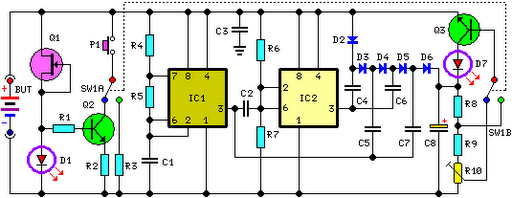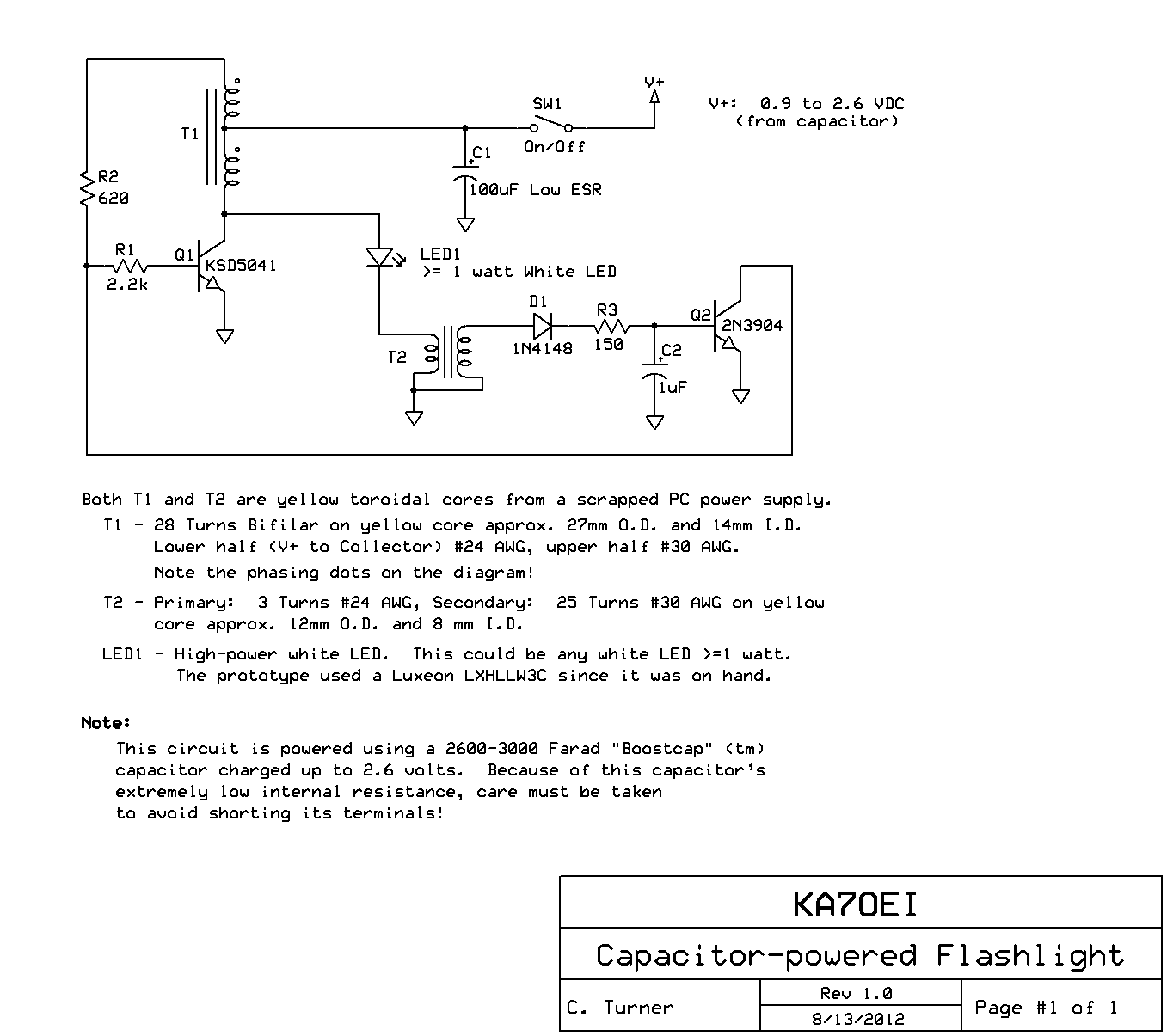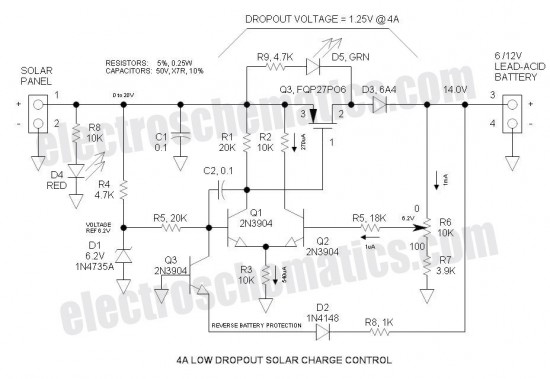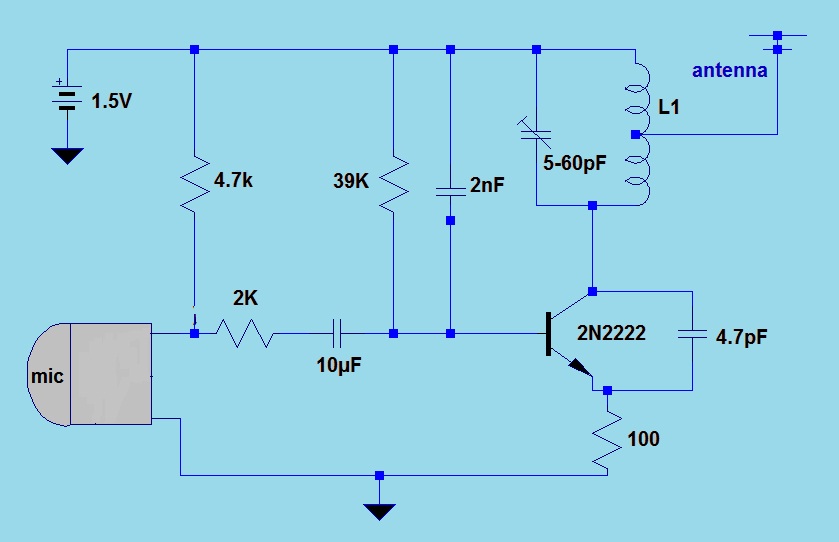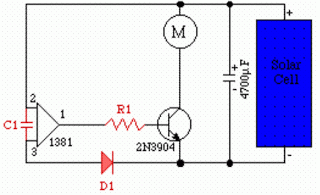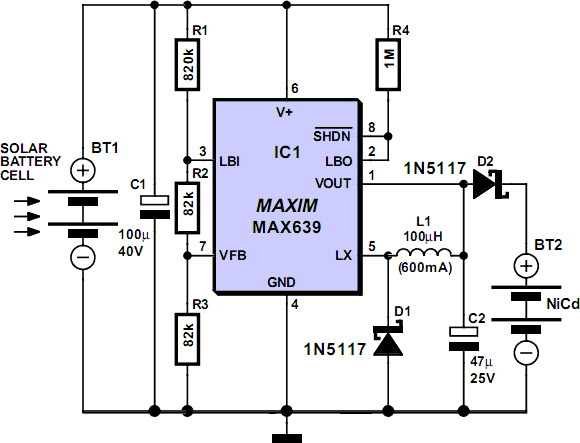
Solar Powered Animal Scarer
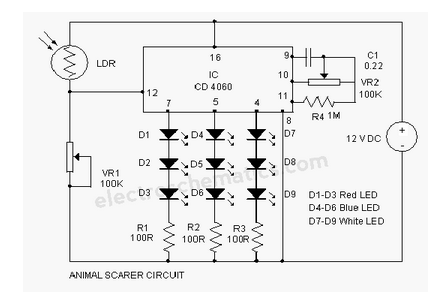
This is a solar-powered flasher designed to deter nocturnal animals such as bats and cats from farmyards or residential premises. The device features a bright multicolored light.
The solar-powered flasher operates by utilizing a solar panel to harness sunlight, converting it into electrical energy to power the flashing light. This energy-efficient design eliminates the need for external power sources, making it ideal for outdoor use.
The circuit typically consists of the following components: a solar panel, a rechargeable battery, a microcontroller or timer circuit, and an LED array capable of producing multicolored light. The solar panel charges the battery during the day, ensuring that the device remains operational at night when it is most needed.
The microcontroller or timer circuit is programmed to activate the LED array at specific intervals, creating a flashing effect that can effectively startle and deter animals. The multicolored LEDs enhance the visibility and unpredictability of the light, making it more effective in frightening away unwanted wildlife.
In addition to its primary function, the design may include features such as adjustable sensitivity settings or motion detection capabilities to optimize performance based on the environment. The enclosure should be weather-resistant to withstand outdoor conditions, ensuring longevity and reliability of the device.
Overall, this solar-powered flasher represents an eco-friendly solution for protecting agricultural and residential areas from nocturnal animal intrusions.Here is a solar powered Flasher to scare away the nocturnal animals like bats and cats from the farm yard or premises of the house. The brilliant multicol.. 🔗 External reference
The solar-powered flasher operates by utilizing a solar panel to harness sunlight, converting it into electrical energy to power the flashing light. This energy-efficient design eliminates the need for external power sources, making it ideal for outdoor use.
The circuit typically consists of the following components: a solar panel, a rechargeable battery, a microcontroller or timer circuit, and an LED array capable of producing multicolored light. The solar panel charges the battery during the day, ensuring that the device remains operational at night when it is most needed.
The microcontroller or timer circuit is programmed to activate the LED array at specific intervals, creating a flashing effect that can effectively startle and deter animals. The multicolored LEDs enhance the visibility and unpredictability of the light, making it more effective in frightening away unwanted wildlife.
In addition to its primary function, the design may include features such as adjustable sensitivity settings or motion detection capabilities to optimize performance based on the environment. The enclosure should be weather-resistant to withstand outdoor conditions, ensuring longevity and reliability of the device.
Overall, this solar-powered flasher represents an eco-friendly solution for protecting agricultural and residential areas from nocturnal animal intrusions.Here is a solar powered Flasher to scare away the nocturnal animals like bats and cats from the farm yard or premises of the house. The brilliant multicol.. 🔗 External reference
Warning: include(partials/cookie-banner.php): Failed to open stream: Permission denied in /var/www/html/nextgr/view-circuit.php on line 713
Warning: include(): Failed opening 'partials/cookie-banner.php' for inclusion (include_path='.:/usr/share/php') in /var/www/html/nextgr/view-circuit.php on line 713
